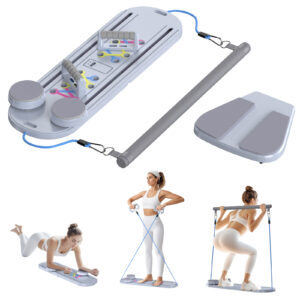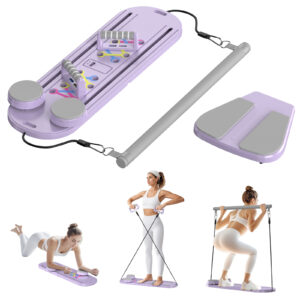Why Do Muscles Feel Sore After a Workout?
Lactic Acid Buildup vs. Delayed Onset Muscle Soreness (DOMS)
During intense exercise, muscle contractions cause lactic acid accumulation, leading to a temporary burning sensation. However, most post-workout muscle soreness is due to Delayed Onset Muscle Soreness (DOMS), which peaks 24-72 hours after training.
DOMS occurs due to microscopic muscle fiber damage and an inflammatory response, especially after eccentric movements like squats or deadlifts. While uncomfortable, it is a natural part of muscle adaptation and growth.
The Relationship Between Training Intensity and Muscle Microdamage
The degree of muscle soreness is directly related to training intensity. High-resistance training leads to more significant muscle fiber damage, activating the body’s repair mechanisms.
- Resistance Training: Compound movements like squats, deadlifts, and bench presses cause the most DOMS, especially for beginners or those returning from a break.
- High-Intensity Interval Training (HIIT): Short bursts of intense effort can increase lactic acid buildup, though soreness typically subsides faster.
- Endurance Training: Long-distance running or cycling mainly causes muscle fatigue rather than severe DOMS.
How Different Training Styles Affect Muscle Fatigue
Recovery needs vary depending on training type:
- Anaerobic Training: Requires longer recovery times and is associated with significant DOMS.
- Aerobic Training: Causes general fatigue but allows for faster recovery.
- Hybrid Training: A combination of strength and endurance training demands a more comprehensive recovery strategy.
Effective Training Methods for Muscle Recovery
Low-Intensity Cardio (Active Recovery)
Engaging in low-intensity cardio helps accelerate recovery by promoting circulation and nutrient delivery to sore muscles. Effective activities include:
- Light jogging: Enhances blood flow and removes metabolic waste.
- Swimming: Reduces joint stress while providing gentle muscle engagement.
- Brisk walking or cycling: Ideal for severe muscle soreness.
Studies indicate that active recovery helps flush out toxins, such as lactic acid, reducing muscle stiffness and accelerating healing.
Static vs. Dynamic Stretching
Stretching plays a crucial role in muscle recovery, but it’s essential to distinguish between static stretching and dynamic stretching:
- Dynamic Stretching: Best performed before workouts to activate muscles and improve mobility.
- Static Stretching: Ideal for post-workout recovery, relieving muscle tightness and potentially reducing DOMS, though excessive stretching may worsen damage.
Foam Rolling for Myofascial Release
Foam rolling, also known as self-myofascial release (SMR), helps reduce muscle tightness and improve circulation. Benefits include:
- Enhancing blood flow and muscle repair.
- Decreasing muscle knots (trigger points) and tension.
- Improving flexibility and reducing future injury risk.
When using a foam roller, apply moderate pressure to each muscle group for 30-60 seconds, avoiding excessive force that may cause bruising.
Key Nutrition Strategies for Muscle Recovery
The Role of Protein in Muscle Repair
Protein is essential for muscle repair and growth. After training, muscle fibers experience tiny tears that require protein intake for recovery. Research suggests:
- Consuming 1.6-2.2g of protein per kg of body weight to optimize muscle recovery.
- Top protein sources: chicken, fish, lean beef, eggs, whey protein, soy protein.
- Consuming protein within 30-60 minutes post-workout enhances muscle protein synthesis (MPS).
Carbohydrate-to-Protein Ratio for Glycogen Replenishment
Intense training depletes muscle glycogen stores, making carbohydrate intake crucial for energy restoration. Benefits of post-workout carbs include:
- Replenishing energy and reducing muscle fatigue.
- Stimulating insulin release to enhance amino acid absorption.
- The ideal carbohydrate-to-protein ratio is 3:1 or 4:1, e.g., a banana with a protein shake.
Timing: When to Eat for Maximum Recovery?
The “anabolic window,” or post-workout nutrition window, refers to the optimal time frame for nutrient absorption, typically 30-60 minutes post-exercise. Recommendations include:
- Consuming a balanced meal immediately after training maximizes recovery.
- If a full meal isn’t possible, opt for a protein shake, whole grain toast with peanut butter, or a fruit smoothie.
Best Post-Workout Foods for Muscle Recovery (Dietitian Recommended)
Top Foods for Muscle Repair and Growth
Choosing the right post-workout foods is essential for optimizing muscle recovery. A balanced meal should include:
- High-quality proteins: Chicken breast, fish, eggs, Greek yogurt, whey protein.
- Healthy carbohydrates: Oatmeal, quinoa, sweet potatoes, brown rice.
- Anti-inflammatory foods: Blueberries, almonds, turmeric, fatty fish (salmon, mackerel).
These foods supply amino acids for muscle repair, replenish glycogen stores, and reduce inflammation.
Best Post-Workout Drinks for Recovery
Hydration plays a critical role in muscle recovery. Dehydration can increase muscle cramps and delay recovery. Some ideal post-workout drinks include:
- Whey protein shakes: Quick-digesting protein to boost muscle protein synthesis.
- Electrolyte drinks: Replenishes sodium, potassium, and magnesium lost through sweat.
- Homemade recovery smoothies: Blending banana, protein powder, almond milk, and berries provides an optimal carb-to-protein ratio.
The Importance of Hydration
Water is essential for nutrient transport, metabolic processes, and temperature regulation. Guidelines suggest:
- Drinking 2-3 liters (or 8-12 cups) of water daily, adjusting for sweat loss.
- Consuming electrolytes (sodium, potassium, magnesium) post-workout to maintain hydration balance.
- Checking urine color—light yellow indicates proper hydration, while dark yellow signals dehydration.
Additional Recovery Methods for Muscle Soreness
How Sleep Boosts Muscle Recovery
Quality sleep is one of the most underrated aspects of muscle recovery. Benefits of adequate sleep include:
- Enhancing muscle protein synthesis and growth hormone release.
- Reducing inflammation and oxidative stress.
- Improving overall energy levels and athletic performance.
Experts recommend 7-9 hours of sleep per night for optimal muscle repair.
Meditation and Deep Breathing for Muscle Relaxation
Mindfulness practices can help reduce muscle tension and promote faster recovery:
- Breathing exercises: Deep breathing techniques lower cortisol (stress hormone) levels.
- Meditation: Helps regulate nervous system function, promoting relaxation.
Sleep Supplements for Recovery: Melatonin, Magnesium, and BCAAs
Certain supplements may enhance muscle recovery during sleep:
- Melatonin: Regulates sleep cycles and improves sleep quality.
- Magnesium: Reduces muscle cramps and promotes relaxation.
- Branched-Chain Amino Acids (BCAAs): Support muscle protein synthesis overnight.
Conclusion: Balance Recovery Training and Nutrition for Optimal Muscle Health
Muscle soreness after a workout is a natural response to intense training. However, proper recovery strategies can minimize discomfort and accelerate muscle repair. The key takeaways include:
- Engage in active recovery (light cardio, stretching, foam rolling) to improve blood flow and reduce stiffness.
- Consume a well-balanced post-workout meal rich in protein and carbohydrates to support muscle repair.
- Hydrate adequately and include electrolytes to prevent muscle cramps.
- Prioritize quality sleep to maximize muscle recovery and reduce inflammation.
By integrating these methods into your fitness routine, you can enhance performance, reduce soreness, and achieve long-term muscle gains.
Frequently Asked Questions (FAQs)
1. How long does muscle soreness last?
Muscle soreness (DOMS) usually peaks between 24-72 hours after exercise and gradually subsides within 5-7 days. Active recovery and proper nutrition can speed up the healing process.
2. Should I work out if my muscles are still sore?
It depends on the severity of the soreness. If it’s mild, light exercise (active recovery) can help. However, if the pain is severe, it’s best to allow more time for recovery before training the same muscle group again.
3. What are the best supplements for muscle recovery?
Some of the most effective recovery supplements include:
- Whey protein: Supports muscle repair.
- BCAAs (Branched-Chain Amino Acids): Helps reduce muscle breakdown.
- Creatine: Enhances muscle energy and recovery.
- Omega-3 fatty acids: Reduces muscle inflammation.
4. Can I speed up muscle recovery naturally?
Yes! Natural ways to accelerate recovery include:
- Eating an anti-inflammatory diet (rich in berries, turmeric, and omega-3s).
- Drinking plenty of water and consuming electrolytes.
- Getting enough rest and quality sleep.
- Practicing deep tissue massage or foam rolling.
5. What’s the best post-workout meal?
The ideal post-workout meal should have a protein-to-carb ratio of around 3:1. Some great options include:
- Grilled chicken with quinoa and steamed vegetables.
- Scrambled eggs with whole-grain toast and avocado.
- Protein smoothie with banana, Greek yogurt, and almond milk.







